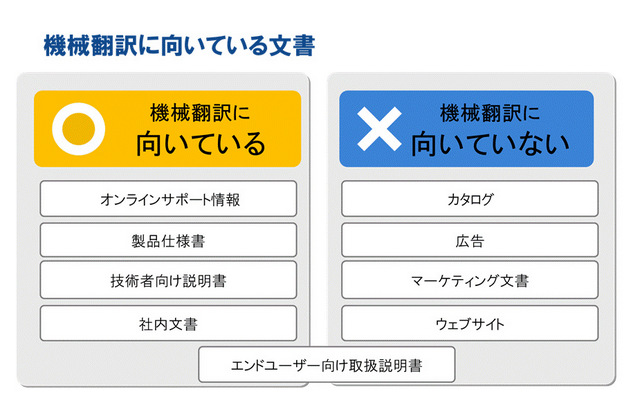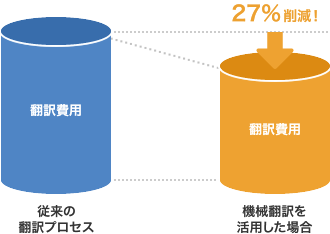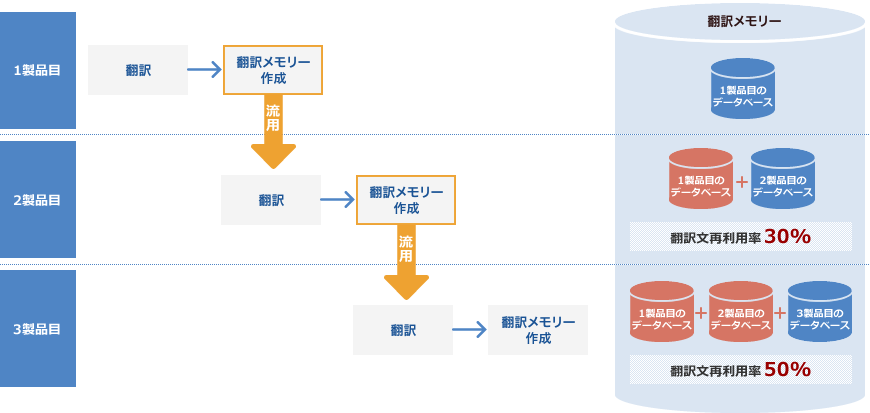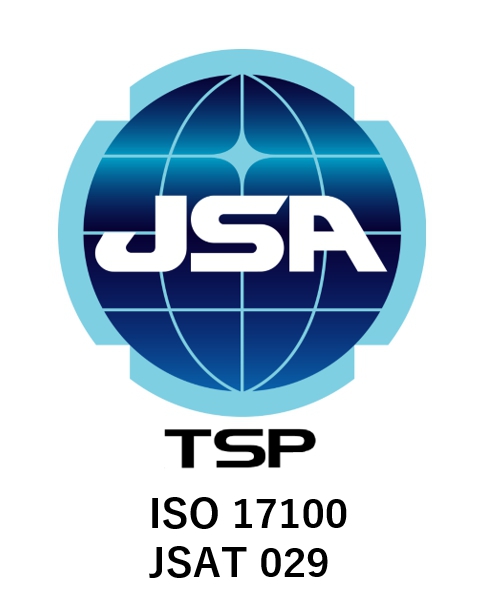Issue 03Translation is too expensive!
- Localization: HOME
- Search by Issue
- Translation is too expensive!
Translation is too expensive!
- We want to reduce costs without compromising quality.
- We want to try the latest machine translation (MT) and AI solutions that everyone is talking about.
- We want to expand to multiple languages, but I cannot secure the budget for all of them.
Proposals
1. Cost reduction through machine translation (MT)
Machine translation (MT/automatic translation) is said to have reached a practical level since the emergence of neural machine translation. At Human Science, we weild our experience in utilizing various machine translations throughout the translation field to propose practical solutions using machine translation.
Services Offered
- Machine translation implementation consultation Consulting examples:
- Pre-edit of source text to improve machine translation quality
- Post-edit
- Machine translation quality evaluation
・Selecting an MT engine from 2 to 3 types
・Formulating the workflow
Human Science is a translation company that understands the characteristics of machine translation, so we can propose less expensive translation methods that combine machine translation and human translation. For more information on Human Science's machine translation services, please see our Machine Translation/Automatic Translation Services page.
Ensuring a Successful Machine Translation (MT) Project
At Human Science, we consider the feasibility of introducing machine translation by analyzing the target documents, target readers, and cost-effectiveness.
- Benefits include lower costs and faster delivery.
- Disadvantages may include negative impacts to customer satisfaction, brand image, and after-sales support.
We weigh all of these factors to determine whether machine translation is applicable and appropriate.
In major Western companies, it is believed that machine translation is most effective when applied to materials with a limited target audience and a large volume of text, such as support information web pages and documents for developers.

The real key to a successful machine translation lies in the agreement between client and LSP on how much the automatic results should be edited. Human Science will propose the best solution based on our extensive achievement record.
Translation memory (TM) use
By combining traditional TM data with machine translation, we can utilize existing TMs without wasting them.
For passages where we can reuse previous translations, we will use translations from the TM. And for new passages that require translation, we will use automatically translated text. This optimizes project efficiency while ensuring consistency with existing translations and cutting costs.
Dictionary use
By continuously utilizing dictionaries, we can improve the quality level of translated texts. Existing glossaries can also be incorporated.
MT evaluation
We verify and evaluate the quality of MT engines. Please use us as a second opinion to create more practical and effective MT.
Post-editor training
Not only do post-editors need to understand the characteristics of machine translation, but they also need the skills to quickly determine where and how to correct automatically translated sentences. Post-editing is not something that just anyone can do; it requires skilled translators or reviewers to perform the task. Our company has established a special training program to improve our post-editing team.
Post-editing guideline development
We have established our own guidelines for post-editing based on our experience with MT. With this as our foundation, we provide post-editing services tailored to our clients' needs while ensuring a consistent level of corrections after machine translation.
Workflow Example

By implementing a machine translation workflow with key points in mind, some projects achieved a 27.5% cost reduction.
Cost Reduction Example

The potential cost reduction rate varies depending on the document to be translated, the desired translation quality, and the availability of past translation assets.
For a more tailored estimate, please feel free to contact us. Or, for more information on Human Science's machine translation services in general, see Machine Translation and Automatic Translation Services.
2. A translation process that maximizes database use
Human Science also lowers costs by building translation databases (translation memories) and reusing past translated texts.
For the translation of manuals, user guides, and specifications in particular, past translations can be extensively utilized to greatly reduce costs.
・Numerous updates and model changes
・Lines of similar products or related goods
At Human Science, we suggest lowering costs through a more reusable database-driven translation process.
Process Example

* The amount of reusable content (aka cost reduction amount) varies depending on the content of the documents.


